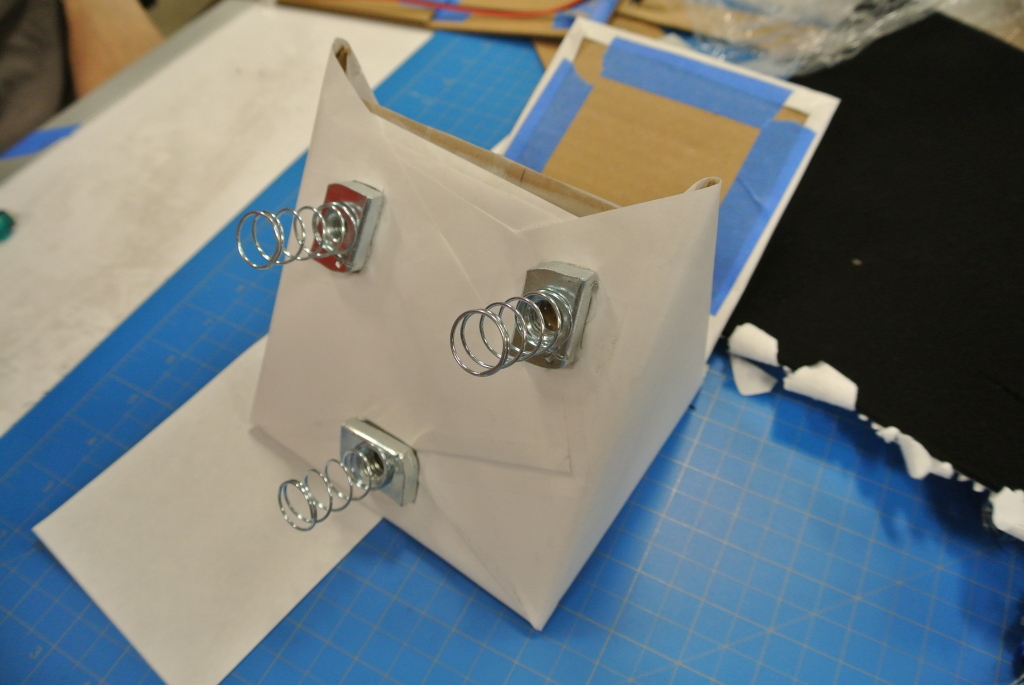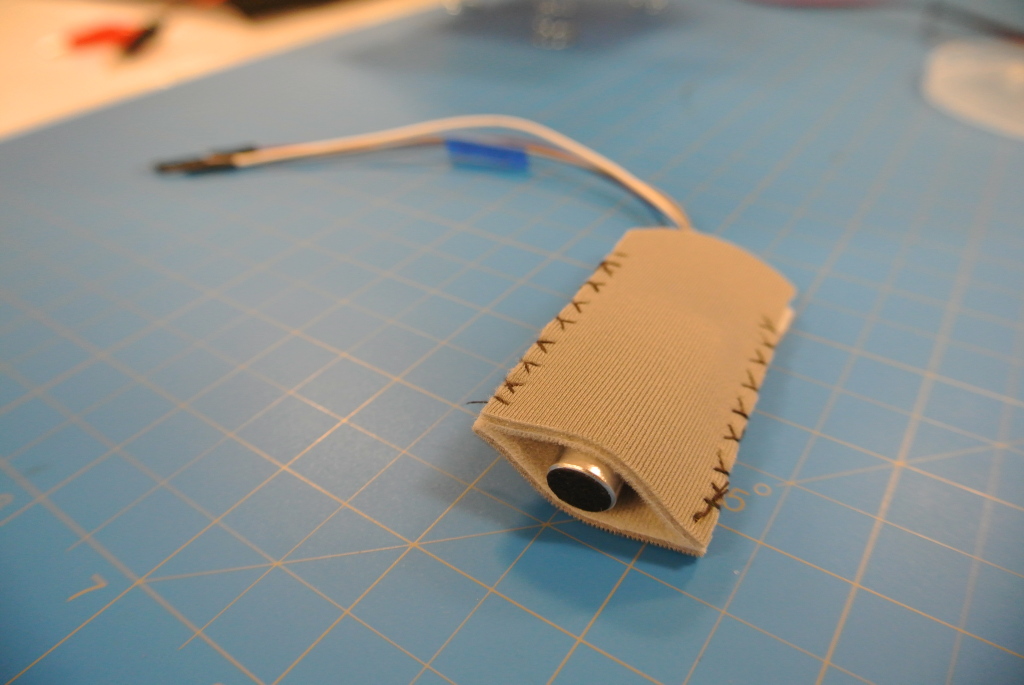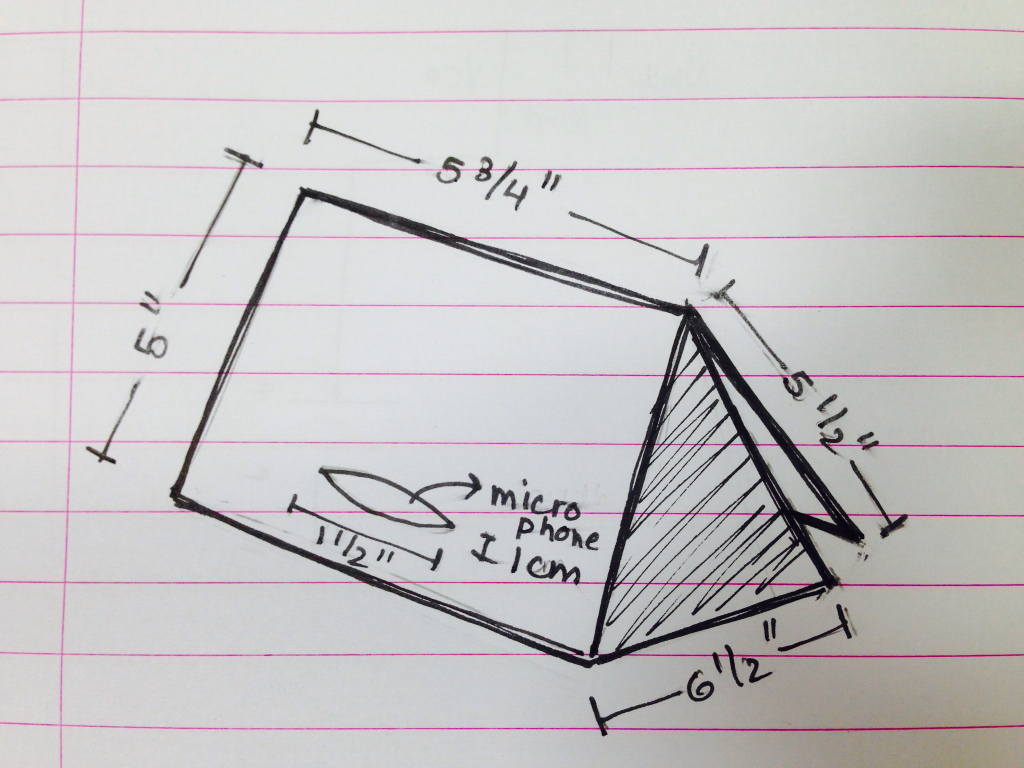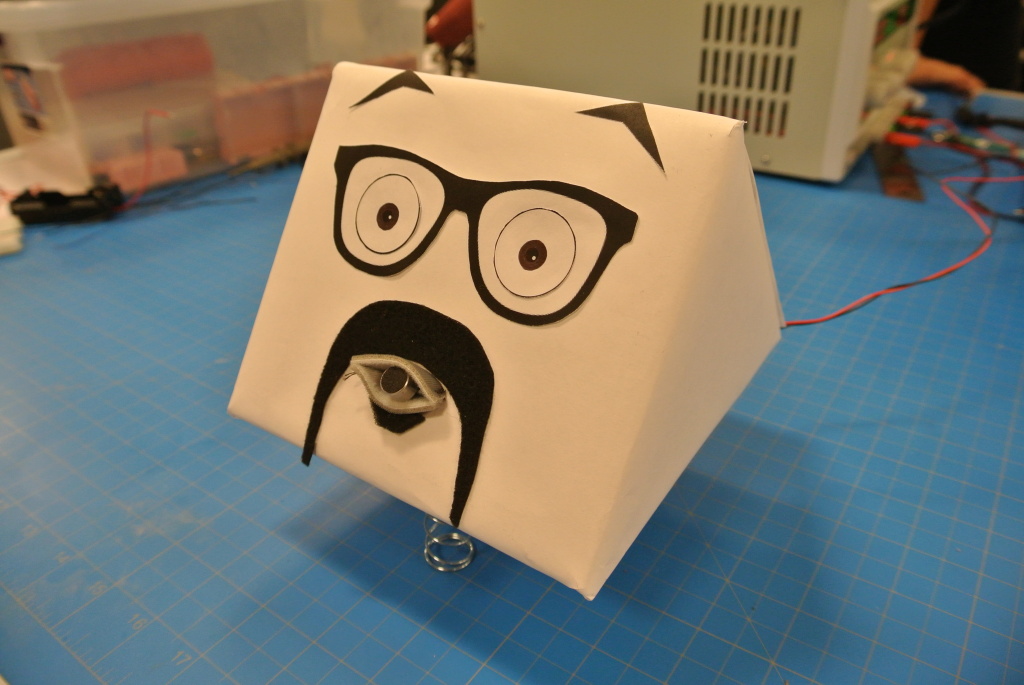1A- Basic Circuits Project – Anxious Little Individual (A.L.I.)
|
Group Members: Alex Wang, Daniel Hua, Judy Han, Kaan Dogrusoz, and Riya Savla IntroductionIn this project, we sought to create an object that would respond to an emotional stimulus. We wanted the device to connect to users at a personal level and so, we came up with the Anxious Little Individual (A.L.I.) which responds with fear and anxiety just as a person would. A.L.I. is able to detect loud noises which causes it to vibrate and shake nervously, letting the user know that it is scared. This reflects how we respond to reprimands or harsh sounds. aThis one-in-one-out system converts the sound input into motion. An Electret microphone detects the input, and a small DC motor with an unbalanced weight generates the vibrations. Video
Technical NotesMechanicsThe robot’s body was made from lightweight cardboard which vibrates easily. The robot’s body was propped up on springs to further enhance its motion. To generate vibrations from the motor, we attached an off-center weight to it. Also, to prevent sound and vibrations from the box causing feedback with its microphone, we insulated the microphone from the box by wrapping it in a neoprene sleeve. ElectronicsThe microphone detects loud sounds within approximately a foot in front of the A.L.I., and converts the sound waves to an electrical signal. The signal is raised to 5 volts by a step-up regulator, causing a MOSFET to turn on and trigger the motor.
Circuit Diagram of the device Issues/Observations
Created with flickr slideshow.
|








